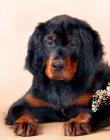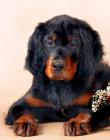Gordon Setter
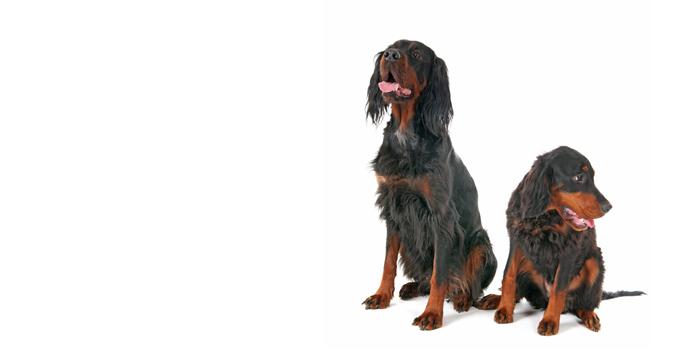
In my own words
I might be big, but please don’t be intimidated! I just want to be friends with you! While it’s true I love to run around and I can act a bit immature sometimes, I really just want to be close to you and keep you company. Once I’ve had all my exercise and a good roam around the garden, I just like to kick back and relax with you.
The only thing I love better than being by your side is to go on a chase. I admit, I’ve worried my owners on a few occasions by running off after a scent, but once I catch a whiff of something interesting I’ve got to follow the train and find it! Who could resist?!
My ideal owner(s)
Country folk
Farmers
Families
Active people
Outdoors types
What they say about me
Devoted
Intelligent
Active
Gentle giant
Handsome
Please read on to find out more about me, and whether I’ll be someone you’ll be happy to live with for the next 12 years
Is this Gordon Setter for you?
Test your knowledge about the Gordon Setter
Information essential about the Gordon Setter
Kennel Club Group:
Gundog
Size:
Large: Weight Male 55 – 80 lbs (25 - 36 kg) Female 45 – 70 lbs (20 - 32 kg)
Height Male 24 – 27” (61 - 69 cm) Female 23 – 26” (58 - 66 cm)Popularity:
The Gordon Setter has something of a cult following, with a selection of avid fans of the breed. However, the breed is generally not as well-known as other breeds of setter and is considered rare in most parts of the world.
Breed History:
The name Gordon Setter was given to this breed in 1924 by the UK Kennel Club. Previously, the Gordon Setter was known as the Black and Tan Setter which was bred to be a hunting dog in Scotland. The name Gordon Setter was chosen due to the close link the setters had to the kennels of Scottish nobleman Alexander Gordon, 4th Duke of Gordon. He is credited as the founder of the Gordon after creating the Gordon Setter breed standard and popularising the breed during the early 1800s while owning a number of the dogs and keeping them on his estate.
The Gordon Setter was prized for its ability as a gundog and was especially popular in rural Scotland. In 1842 the Gordon Setter was imported into the United States where it was also a popular breed for a limited time. The dogs which were brought into America were called Rake and Rachel and were from Duke Alexander Gordon’s own kennels.
Character:
Your Gordon Setter loves to take a long walk every single day and will become a handful if he doesn’t get this vital exercise. A good walk will prevent your Gordon Setter from becoming bored, restless, badly behaved and destructive and they will also make good use of a secure, fenced garden to roam around in. As the Gordon Setter was bred to work closely with its owner it is a devoted, obedient and loving pet who loves human company and has a sweet nature. Your Gordon Setter will get on well with children thanks to a kind and gentle personality. However, while your Gordon Setter will cherish his owners he may be aloof around strangers and won’t readily trust new people. While Gordon Setters tend to be quite relaxed and obedient, if they sense that their owner is timid they will try to boss them around and take charge over them. It is therefore important to have an air of authority around your Gordon Setter so that he knows his place in the family. Gordon Setters tend to get on well with other dogs when they are well socialised, but won’t usually get on with other pets such as cats unless they have been brought up with them.
Temperament:
Your Gordon Setter is an enthusiastic breed that takes an interest in everything you do. He loves to get outside and explore with his owner and is incredibly alert and tuned into his surroundings thanks to his inherent gundog abilities. Strong minded and intelligent, but with a desire to please his owner the Gordon Setter makes a wonderful family pet for active and attentive households. However, while the Gordon Setter loves children they have a puppy like nature which continues into adulthood and can make them unintentionally boisterous so they may not be suitable for families with very young children. It is important that you enjoy exercise, as your Gordon Setter needs a lot of it! Two hours of walking and running every single day is an absolute must if you want a well behaved and relaxed Gordon Setter. The Gordon Setter has strong hunting instincts and love to chase; if they catch a scent of something interesting they will follow it everywhere even if it is unsafe so keep your setter on a leash of you are near roads or not in an enclosed space. Although your Gordon Setter needs a lot of time and energy to keep up with his exercise needs, he will be a laid back and easy going pet provided his needs are met. The Gordon Setter is often called a gentle giant for his loving, affectionate and empathetic temperament.
Conformation:
The Gordon Setter is the largest breed of Setter and a lean yet strong frame. The head is deep with a long muzzle which is the same length as the skull. The teeth meet in a perfect scissor bite. The Gordon Setter has dark brown, oval eyes and a broad, black nose. The ears are long and low, hanging close to the head. The Gordon Setter’s tail is short and features feathering on the underside. Gordon Setters have a glossy long coat which can be either straight or waved.
Colour:
The Gordon Setter’s coat comes in black with tan markings which range from chestnut to mahogany shades and feature on the eyes, side of the muzzle, throat, chest and legs. Occasionally Gordon Setters may have a small white marking on the chest.
Training:
Your Gordon Setter is a pleasure to train as he’s intelligent, eager to please and quick to learn. He’ll respond well to positive reinforcement and plenty of verbal praise, as well as small treats and lots of affection. It is important that you keep an air of authority around your Gordon Setter so that he knows that you are in charge, or he may try to boss you around or become stubborn and uncooperative. If he senses that you are being timid he’ll try to take advantage of it, so the Gordon Setter will be best suited to a confident and experienced owner.
Care:
The Gordon Setter’s long coat needs a fair bit of care but it is not high maintenance. A daily brush to keep the coat silky, soft and free from mattes coupled with the occasional trim and bath is all the Gordon Setter needs.
Health:
The life expectancy of the Gordon Setter is between 10 to 12 years. While Gordon Setters are generally healthy they can be prone to hip dysplasia, hypothyroidism and gastric torsion. Since 2009 there has been an issue with late onset progressive retinal atrophy and it is expected that as many as 50% of Gordon Setters are carriers of the gene causing the issue. A DNA test is now available, so ask your breeder if your Gordon Setter’s parents have been tested.
You may also like:
If you like Gordon Setters, you may be interested in breeds of the same size »




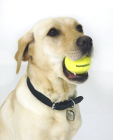
If you like Gordon Setters, you may like other breeds with similar characteristics »

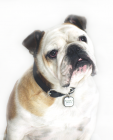


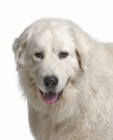
Advice on choosing your breed »
Find an animal shelter or rescue home where a Gordon Setter is waiting for a new home »
The following grid gives a fast track review which covers all breeds. You can apply it to help you decide if a Gordon Setter is suitable for you, the environment where you live, your personality and your lifestyle. On the grid, 1 = strongly disagree, and 5 = strongly agree. For example, if you are looking for a dog that is suitable for a city apartment, look down the list under ‘environment’ and you will see that Gordon Setters are not suitable for urban living, scoring 1. If you are looking for a dog that would make a good jogging companion, look under ‘activities’ and you’ll see a Gordon Setter would be an excellent choice, scoring 5. You might like to save or print off this section and keep it for reference while you check some other breeds before making your choice.
Be the first to rate this breed »
|
*PLEASE NOTE: All our breed profiles are general, and all dogs are individuals. Always talk to the breeders and meet the owners you are buying from. Try to meet the dog and its parents if it is a puppy in their home environment.









